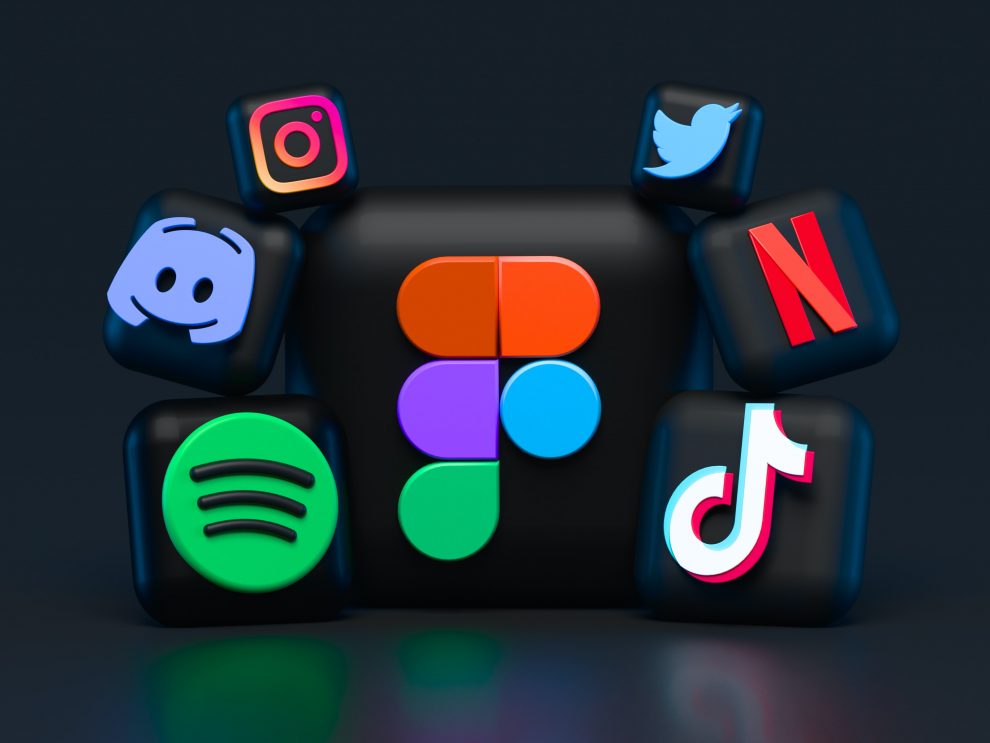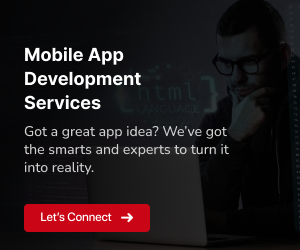What is a Social Media App?
A social media app is a software application created for mobile devices or web platforms that empower users to engage, exchange content, and communicate in a digital environment. These applications offer a virtual space for individuals to link up, participate actively, and distribute diverse content types, including text, images, videos, and hyperlinks. The central objective of a social media app is to facilitate social engagement and nurture digital communities.
How To Make A Social Media App The Right Way?
Developing a social media app involves a series of essential steps and considerations. Below is a general outline to help you begin
Market Research:
Research the current social media landscape to pinpoint trends, user preferences, and potential market gaps. Understand your competitors and find ways your app can better address user needs.
Platform and Technology:
Choose whether to develop a mobile app, web app, or both. Select a suitable technology stack based on your target platforms (iOS, Android, web). Common choices include React Native, Flutter for mobile, and frameworks like React or Angular for the web.
Features and Functionality:
Determine the core features of your app. These may encompass user profiles, news feeds, posts, comments, likes, sharing, direct messaging, notifications, search capabilities, and more. Prioritize features aligned with your app’s unique value.
Design and User Experience (UX/UI):
Craft an intuitive and visually pleasing design. Focus on delivering a seamless user experience, effortless navigation, and a visually coherent interface. Consider both aesthetics and usability.
User Registration and Authentication:
Implement secure user registration and login systems. Options include traditional email/password authentication, social media logins (e.g., Facebook, Google), or modern methods like biometric authentication.
Content Creation and Sharing:
Develop functionalities for users to craft and share content, such as text posts, images, videos, and links. Create a user-friendly content creation interface with relevant editing tools.
News Feed and Algorithms:
Design a news feed that displays content based on user interests, relationships, and engagement history. Consider incorporating algorithms that curate content to boost user engagement.
Privacy and Security:
Prioritize user privacy and data security. Integrate features that enable users to control content visibility, manage privacy settings, and report inappropriate content or users.
Notifications:
Incorporate a notification system to keep users informed about likes, comments, mentions, and other pertinent activities. Personalize notifications based on user preferences.
Monetization Strategies:
Determine how to monetize your app. Options include in-app advertising, premium subscriptions, in-app purchases, sponsored content, or a blend of these methods.
Testing and Iteration:
Rigorously test your app to identify and resolve bugs, glitches, and usability concerns. Gather feedback from beta testers and implement iterative improvements based on their input.
Launch and Marketing:
Develop a marketing strategy for your app’s launch. Utilize social media, online advertising, influencer collaborations, and other promotional approaches to attract users to your platform.
User Engagement and Growth:
Continuously engage with your user base through updates, new features, and community-building efforts. Monitor user feedback and analytics to uncover areas for enhancement.
Building a successful social media app necessitates a blend of technical prowess, user-centric design, and effective marketing techniques. It’s crucial to stay attuned to industry trends and adapt your app in line with evolving user needs and preferences.
Why opt for social media app development in 2023?
Choosing to embark on social media app development in 2023 presents a multitude of compelling reasons:
1.Dynamic Digital Landscape:
The digital environment is in a constant state of evolution, with an increasing number of individuals depending on smartphones and the internet for communication and information. Opting to create a social media app enables you to align with this trend and cater to a tech-savvy demographic.
2. Expansive User Base:
The momentum of social media usage remains robust. By introducing a novel app, you can captivate users seeking innovative and fresh platforms to establish connections, exchange content, and engage with others.
3. Niche Prospects:
Despite the presence of established social media giants, there exist untouched niches and specific interests that lack comprehensive coverage. Crafting a tailored social media app for a specific community or interest cluster can empower you to penetrate an untapped market.
4. Monetization Prospects:
Social media apps provide an array of avenues for monetization, encompassing in-app advertisements, premium subscriptions, and sponsored content. The development of a popular app can yield a sustainable revenue stream.
5. Innovative Attributes:
Capitalizing on technological advancements, you can integrate cutting-edge features like augmented reality (AR), virtual reality (VR), live streaming, and personalized content recommendation algorithms to elevate user engagement.
6. Insights Driven by Data:
Social media platforms yield a treasure trove of user data that can be harnessed to comprehend user behaviour, inclinations, and trends. This data-centric approach aids in refining your app and delivering a personalized user experience.
7. Global Outreach:
Social media transcends geographical confines, granting you the potential to reach a worldwide audience. This proves particularly advantageous if your app centres around subjects of broad international interest.
8. Fostering Communities:
Social media fosters digital communities where individuals of shared interests can connect, share insights, and collaborate. Your app has the potential to emerge as a focal point for uniting people around common passions.
9. Career Prospects:
As the architect of a triumphant social media app, you can position yourself as a trailblazer within the tech industry, unlocking pathways to potential career advancements and collaborations.
10. Learning and Advancement:
Initiating social media app development represents a challenging venture that bestows invaluable learning experiences. It empowers you to refine technical skills, enhance project management proficiency, devise effective marketing strategies, and gain profound insights into user interactions.
Types of social media Apps

There are several types of social media apps, each catering to different communication styles, content formats, and user interests. Here are some common types of social media apps:
1. Social Networking Platforms:
These platforms focus on connecting users with friends, family, colleagues, and acquaintances. They typically offer features like user profiles, friend requests, news feeds, and the ability to share text, photos, videos, and links. Examples include Facebook, LinkedIn, and Google+.
2. Microblogging Platforms:
Microblogging platforms allow users to share short, concise posts with their followers. These posts often include text, images, or links. Users can engage with posts through likes, comments, and shares. Twitter is a well-known microblogging platform.
3. Media Sharing Apps:
These apps are centred around sharing visual content, such as photos and videos. Users can edit, filter, and enhance their content before sharing it with their network. Instagram and Snapchat fall into this category.
4. Video-Sharing Platforms:
Video-sharing apps focus specifically on sharing longer-form videos, often ranging from a few seconds to several minutes. Users can upload and view a variety of video content, including vlogs, tutorials, and entertainment. TikTok and YouTube are prominent examples.
5. Messaging Apps:
While not traditional social media platforms, messaging apps facilitate private communication between individuals and groups. Some messaging apps also offer social features like status updates and the ability to share media. WhatsApp, Facebook Messenger, and Telegram are popular messaging apps
Each type of social media app serves different purposes and attracts distinct user bases. The choice of which type to develop or use depends on your goals, interests, and the target audience you wish to reach.
Examples of the best social media apps in 2023
1. Facebook:
One of the most prominent social networking platforms, offering features like profiles, news feeds, groups, pages, and multimedia sharing.
2. Instagram:
A photo and video sharing app, known for its visual content and features like stories and IGTV.
3. Twitter:
A microblogging platform where users share short text posts (tweets) with followers, and engage through likes, retweets, and replies.
4.LinkedIn:
A professional networking platform designed for career-related connections, job searching, and industry discussions.
5.TikTok:
A video-sharing app focused on short-form, entertaining videos set to music or sound bites.
Monetization models
1. Freemium Approach:
Present a fundamental version of your app for free, accompanied by the availability of a premium version that boasts augmented functionalities or supplementary features, accessible to users via a paid subscription.
2. In-App Advertising:
Embed advertisements within your app’s interface. This can encompass various formats like banner ads, interstitial ads, video ads, or native ads. You accrue revenue contingent upon impressions, clicks, or views.
3. In-App Purchases (IAPs):
Enable users to procure virtual commodities, extra features, content, or in-game items directly within the app. This model proves effective for gaming apps and other applications where users can enrich their experience via purchases.
4. Subscription Model:
Propose diverse subscription tiers that confer users access to exclusive content, premium attributes, or an ad-free encounter, obtainable through recurrent payments (monthly, annually, etc.).
5. Pay-to-Download:
Request users to remit a one-time fee for downloading and installing your app from the respective app store. This model is prevalent among premium apps devoid of ads or additional acquisitions.



















Add Comment